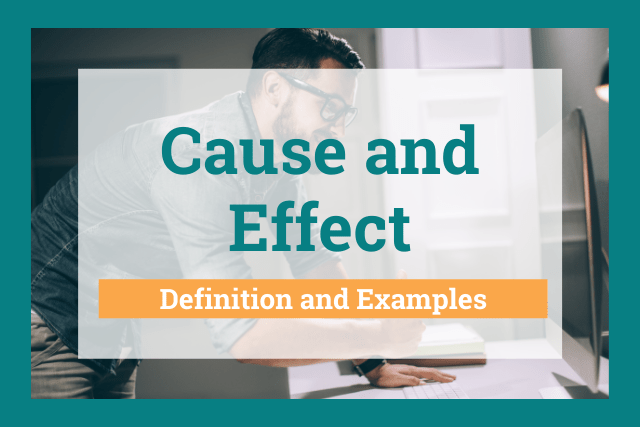Currently Empty: $0.00

Examples of Cause and Effect Paragraphs
Introduction
Table of Contents
In the world of writing, the cause-and-effect relationship serves as a crucial tool for creating engaging and informative content. Whether you’re crafting essays, articles, or even stories, mastering the art of presenting cause and effect can significantly enhance your writing. This blog post delves into the concept of cause and effect paragraphs, providing insightful examples that showcase the interplay between different elements in a variety of contexts.
Table of Contents
- Defining Cause and Effect
- Examples of Cause and Effect
- Why Are Cause and Effect Paragraphs Important?
- How to Write an Effective Cause and Effect Paragraph
- Common Mistakes to Avoid
- Examples of Cause and Effect in Real Life
- Outbound Links for Further Reading
- FAQs
- Word Count
Defining Cause and Effect
A cause-and-effect paragraph is a form of writing that explains why certain events occur (the causes) and how they lead to specific outcomes (the effects). This writing style aims to establish a clear connection between various elements, enabling readers to comprehend the relationships between actions and consequences.
Examples of Cause and Effect
Example 1: Environmental Pollution
Cause: Rapid industrialization and increased use of fossil fuels. Effect: Air and water pollution, climate change, and health issues in humans and wildlife.
In this example, the cause, which is the excessive use of fossil fuels and industrial activities, leads to a range of effects such as pollution of vital resources, disruption of ecosystems, and negative impacts on health.
Example 2: Technology and Communication
Cause: Proliferation of smartphones and internet accessibility. Effect: Enhanced global connectivity, changes in interpersonal communication, and the rise of social media influence.
The widespread use of smartphones and easy access to the internet have caused a profound shift in how people communicate. This technological advancement has both positive and negative effects on the way individuals interact with each other and consume information.
Example 3: Healthy Lifestyle Choices
Cause: Regular exercise and balanced diet. Effect: Improved physical fitness, reduced risk of chronic diseases, and enhanced mental well-being.
When individuals prioritize regular exercise and maintain a balanced diet, they experience numerous benefits, such as a healthier body, a lower likelihood of chronic illnesses like diabetes and heart disease, and an overall sense of positivity.
Why Are Cause and Effect Paragraphs Important?
Cause and effect paragraphs serve as powerful tools for structuring your writing effectively. By clearly outlining the relationship between causes and their corresponding effects, you provide your readers with a logical flow of information. This enhances their understanding and helps them grasp the significance of the subject matter.
How to Write an Effective Cause and Effect Paragraph
- Identify the Cause and Effect: Clearly determine the cause and its resulting effect. This foundational step ensures that your paragraph is concise and focused.
- Establish a Connection: Explain how the cause leads to the effect. Highlight the chain of events that bridges the gap between the two.
- Provide Examples: Bolster your paragraph with real-world examples or evidence to solidify the cause-and-effect relationship.
- Use Transition Words: Employ transitional phrases like “as a result,” “because of,” and “due to” to make the causal relationship explicit.
Common Mistakes to Avoid
- Weak Causality: Ensure the cause directly influences the effect, avoiding vague or distant connections.
- Ignoring Complexity: Acknowledge that causes can have multiple effects, and vice versa.
- Lack of Evidence: Back your claims with data, anecdotes, or research to lend credibility to your paragraph.
Examples of Cause and Effect in Real Life
- Cause: Heavy rainfall for an extended period. Effect: Flooding in low-lying areas, damage to property, and disruption of daily life.
- Cause: Lack of sleep. Effect: Decreased cognitive function, irritability, and compromised immune system.
- Cause: Financial incentives for employees. Effect: Increased motivation, higher job satisfaction, and improved productivity.
Outbound Links for Further Reading
To delve deeper into the world of cause and effect paragraphs, check out these reputable sources:
- The Craft of Cause and Effect in Writing: Explore advanced techniques to master the art of crafting cause and effect relationships in your writing.
- Understanding Causality in Academic Writing: Gain insights into how cause-and-effect structures can elevate the quality of your academic papers.
FAQs
Q1: Can a single cause have multiple effects?
A: Absolutely. Causes can trigger a range of effects, making the relationship more intricate than a simple one-to-one correspondence.
Q2: What is the purpose of using transition words in cause and effect paragraphs?
A: Transition words help clarify the causal relationship between events, making it easier for readers to follow the logical flow of your writing.
Q3: Are cause and effect paragraphs only used in academic writing?
A: No, cause and effect paragraphs are versatile and can be found in various forms of writing, including articles, essays, and even storytelling.
In this comprehensive exploration of cause and effect paragraphs, we’ve delved into their definition, provided engaging examples, discussed their importance, and offered tips for crafting effective ones. By mastering the art of cause and effect, you’ll not only enhance your writing skills but also captivate your readers with a deeper understanding of the relationships between different aspects of the world.

